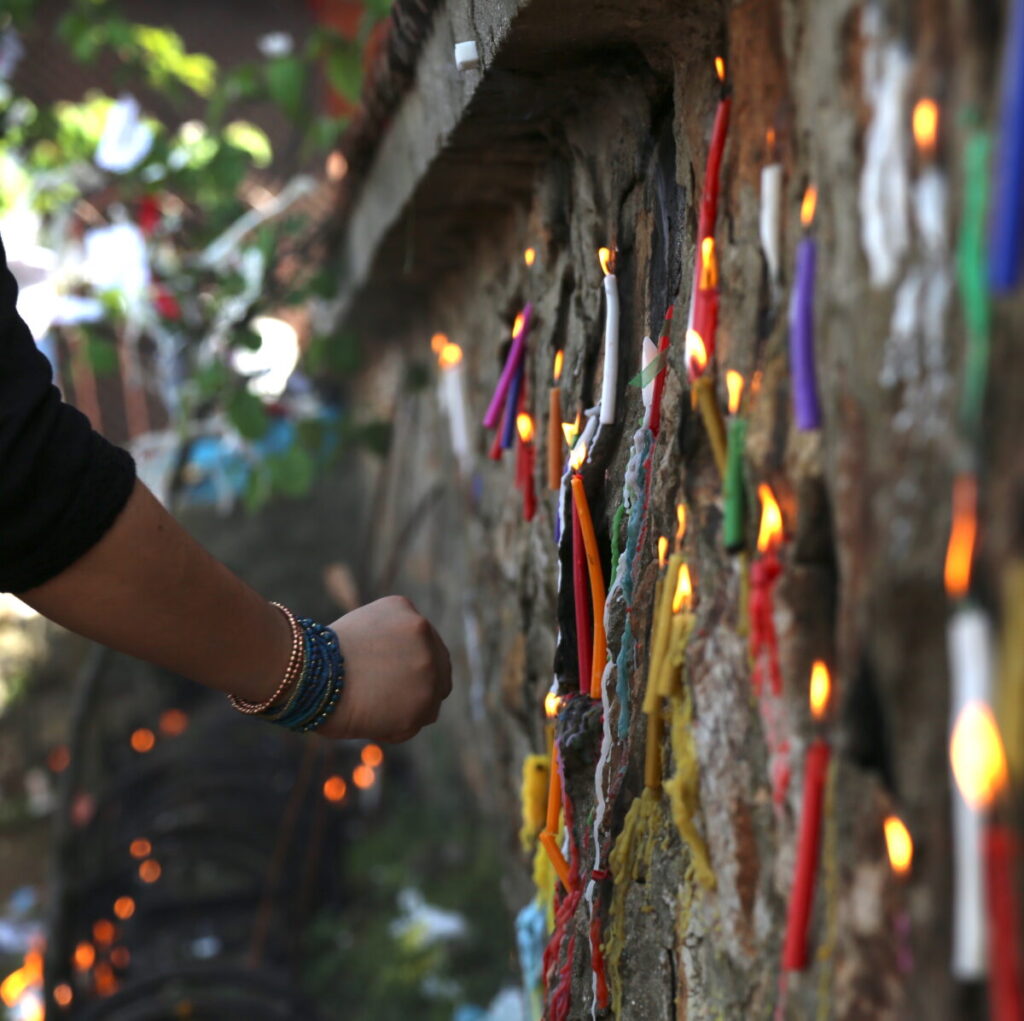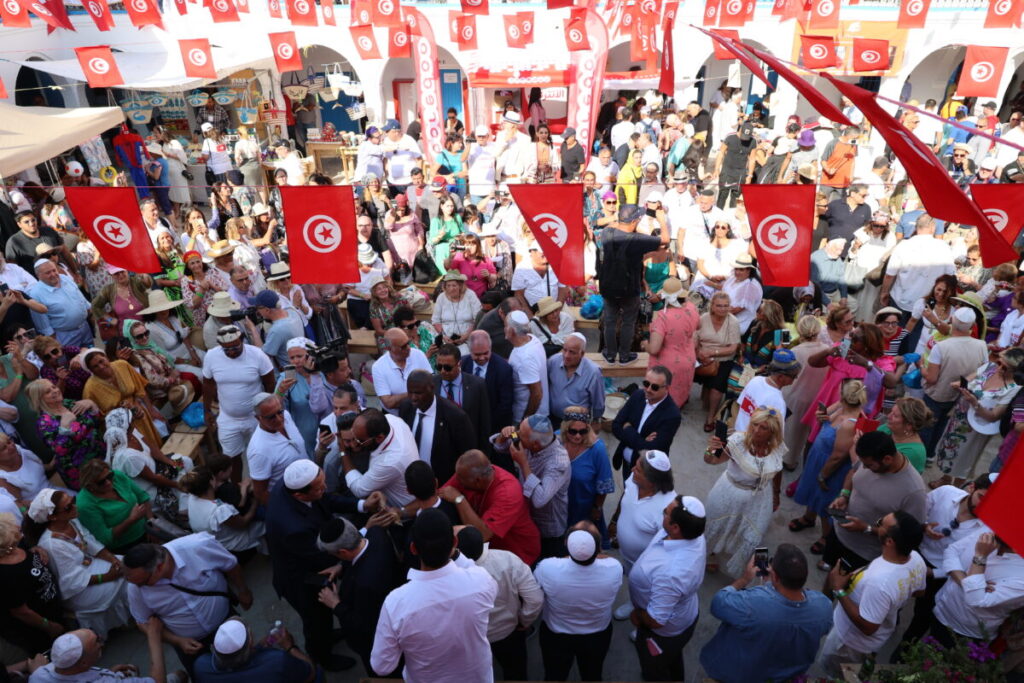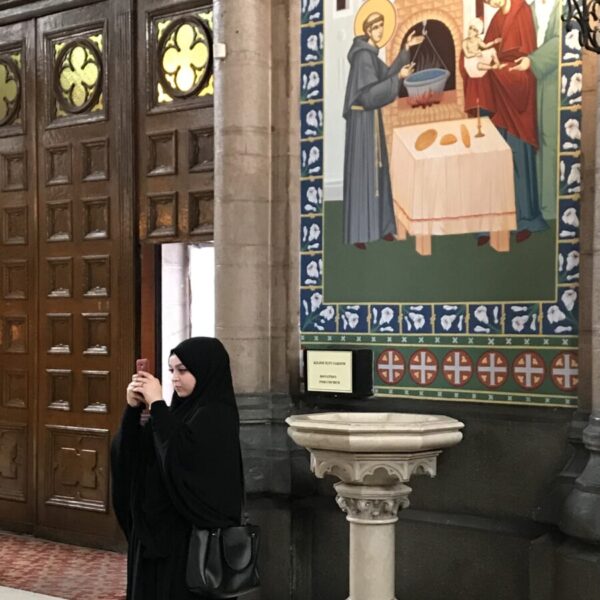From academic research to the field, 22-med gives a voice to those who know how to combine knowledge and sensitive observation. This article intersects the surveys of Dionigi Albera and Manoël Pénicaud, anthropologists at CNRS, on three Mediterranean sites open to multiple religions. It outlines a vibrant map of sanctuaries where prayers, gestures, and stories intertwine beyond confessional boundaries.
Istanbul, a church as an example of shared hospitality : Dionigi Albera – Turkey
Muslim women at the Monastery of Saint George, or the votive desire : Manoël Pénicaud - Turkey
La Ghriba in Djerba, a fragile and persistent Judeo-Muslim pilgrimage : Dionigi Albera – Tunisia
Dionigi Albera, honorary research director at CNRS and initiator of the Shared Holy Places program, and Manoël Pénicaud, anthropologist at CNRS and member of the Jacques Berque Center in Rabat, have been documenting these bridges between religious worlds for years. From three of their texts published on 22-med - available in the 11 languages used on the site - a similar landscape emerges: that of a Mediterranean where one crosses the thresholds of the Other to seek grace, protection, or miracle.
In Istanbul, Büyükada, and Djerba, churches, monasteries, and synagogues gather crowds where confessions intermingle. These shared holy places, far from being mere curiosities, question spiritual coexistence in a world where religious divisions often seem irreducible.
Istanbul: Saint Anthony, an open door to diversity
In the heart of Beyoğlu, on the bustling İstiklal Avenue, the Church of Saint Anthony of Padua stands as an unexpected haven. In this neighborhood, long cosmopolitan, where French was more commonly spoken than Turkish until the 1930s, the neo-Gothic building managed by the Conventual Franciscans remains open every day from 9 AM to 8 PM. A uniqueness: many Christian churches in the area only open sporadically.
Crossing the portal, the paved courtyard leads to an interior bathed in light filtered through stained glass windows. The smell of wax and incense, the respectful silence, the statues and ex-votos create an atmosphere conducive to contemplation. Catholics, Muslims, European or Japanese tourists, Turkish families out for a stroll: all coexist. Some light a candle, others read the prayer displayed at Saint Anthony, while others take the time to observe the stained glass or photograph an architectural detail.
Gestures intersect: Catholics attend mass, Muslims sit in the naves, women walk around the church or sprinkle themselves with holy water. Sometimes, a Quran is discreetly read between two psalms. This plurality of practices does not reflect a desire for conversion but the shared appropriation of a space rich in symbolic resources. The quintessential Catholic figure, Saint Anthony attracts well beyond borders: in Sarajevo or Laç, Albania, his name also gathers crowds where Christians are in the minority.
Büyükada: Threads of color and silent wishes
Every April 23, the Orthodox monastery of Aya Yorgi, perched on the island of Büyükada, sees up to 70,000 pilgrims flocking. Most are Muslim women who come to unravel a colored thread along the path, silently, while internally formulating their wish. This unique ritual gradually carpets the ascent with thousands of intertwined threads, punctuated by amulets against the evil eye, pious images, or small objects bearing promises.

The pilgrimage is also a sensory stroll: horse-drawn carriages replace cars, the salty air mingles with the scent of pine, stalls sell candles, Muslim and Christian rosaries, banners depicting Saint George or Fatima. Inside the church, the space fills with silent prayers, gestures mimicking one rite to another: hands open to the sky, kisses on the icon, lit candles. Sometimes, it is difficult to distinguish who is Christian or Muslim: everyone adopts the gestures of the other, in the hope of being answered.
The overwhelmed Greek monks welcome that day a crowd whose fervor transcends identities. Upon exiting, pieces of sugar are shared in gratitude for a wish fulfilled; some place them directly on the ground forming symbols: house, cradle, car. The site becomes a living fresco of desires and expectations, between intimate faith and popular creativity.
Djerba: La Ghriba, the last Judeo-Muslim symbiosis
In Tunisia, the synagogue of La Ghriba is the only sanctuary where a pilgrimage is frequented by both Jews and Muslims, a legacy of a vast network of Judeo-Muslim cults once present throughout North Africa. Associated with a mysterious saint—perhaps Jewish, perhaps Muslim—La Ghriba has attracted pilgrims from southern Tunisia, Libya, Morocco, Egypt, or Greece since the 19th century.
The legend tells that a young foreign woman lived here, solitary, in a hut made of branches. Her death, her body found intact after a fire, was perceived as a sign: the synagogue was erected at this location. This story with a blurred identity reflects the open character of the place. In the early 20th century, a scholar already compared La Ghriba to “a kind of Jewish Lourdes, not without its Muslim faithful.”
But this openness has withstood multiple shocks: the shooting in 1985, the Al-Qaeda attack in 2002, threats post-2011, and the deadly attack in 2023. Each time, the pilgrimage resumed, sometimes under heavy police surveillance. In May 2024, for the first time, the festival was canceled, with only the rites inside the synagogue being maintained, due to the war in Gaza. The question arises: will this centuries-old symbiosis still be able to take place in the future?
Fragile but vibrant bridges
These places share a deep historical anchoring, often inherited from a political and social context that has disappeared. They are also, in their diversity, living laboratories of interreligious interactions: gestures are borrowed, spaces are shared, and people cross paths without erasing differences.
In the contemporary Mediterranean, where identity tensions quickly crystallize around the religious, these sanctuaries offer a concrete counterpoint: proof that a sacred place can belong to many. A fragile idea, but one that persists, carried by women and men convinced that the efficacy of a wish or prayer knows no borders.

Cover photo: Inside the church, people can walk around and discover religious diversity © Dionigi Albera
